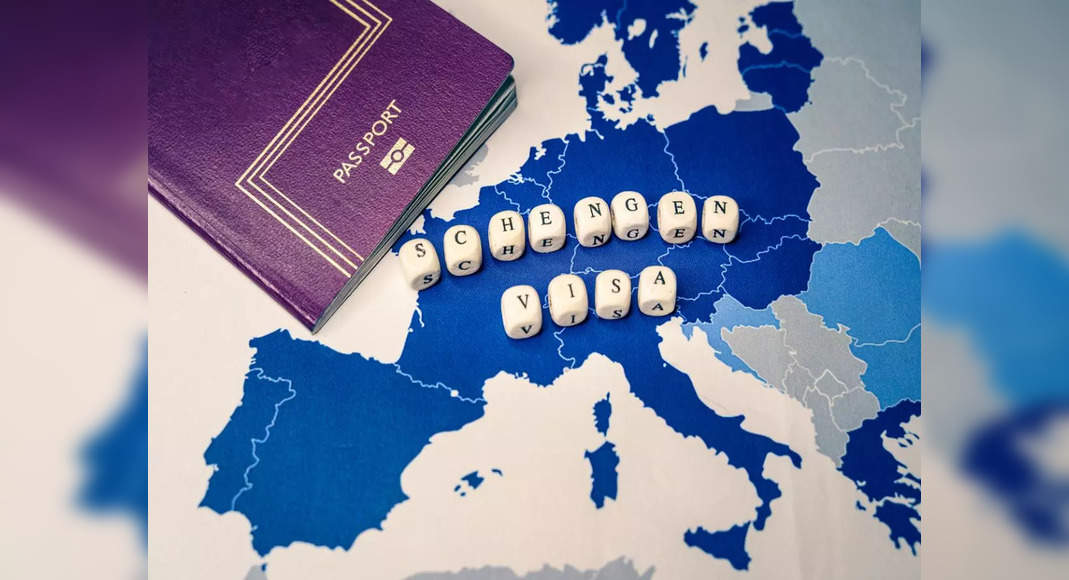Jobs
Poor do not risk life in Dunki flights to US, Europe; they seek jobs in Gulf States

At the very outset one must make it clear that the person who eagerly pays Rs 60 to 80 lakh to agents and suffer enormous hardship and risk to life just to illegally enter the United States, Canada or any European country can in no way be categorized as poor as is being inappropriately dubbed by many of our public opinion makers. Several YouTubers and journalists hurriedly jumped to the conclusion that rampant unemployment and joblessness have prompted many of our youths to undertake such a misadventure.
The issue was in debate following the grounding of a plane in France on its way to Nicaragua from Dubai. All the 303 passengers were supposed to be transported to the Central American country from where they were to be smuggled through the rough terrain and waterways to the United States.
Interestingly, the incident coincided with the launch of Dunki, a film with Shah Rukh Khan in the lead role.
Gulf is better option
No doubt there is acute poverty in South Asia and Sub-Saharan countries of Africa. Yet the fact is that the poor do get jobs in the oil-rich countries of West Asia and not in North America and Europe. The poor cannot afford to go to these Western nations by spending millions of rupees in paying to various international gangs involved in human trafficking. Not only that, it is a huge gamble as 96,917 Indians were prevented from entering the US border in 2023 alone. All the money, time and efforts were lost. Many others landed in jails.
For example, the FIFA World Cup 2022 in Qatar created thousands of jobs for menial workers from this part of the world as well as Africa. There is still much employment scope in the entire region. The number from African countries in the Gulf may be less than that from the Indian Sub-continent simply because the latter is much more densely populated. Officially about 85 lakh Indians are earning their livelihood or are residing in the Gulf and sending money back to their homes. Similar is the story of Pakistan, Bangladesh, Sri Lanka and Nepal.
Any political crisis, for instance, the Iraqi invasion of Kuwait on August 2, 1990 and the subsequent First Gulf War of 1991 created serious problems as lakhs of Indians working in Iraq, Kuwait, Saudi Arabia, etc lost their jobs and had to be air-lifted back to their homes. Needless to say India faced the balance of payment crisis the same year compelling the then newly elected Narasimha Rao government to liberalize the economy.
A close study of the migrant work-force would reveal that a large number of semi-skilled personnel hailing from lower middle class or poor families of Kerala, Andhra Pradesh, Telangana, Bihar, Uttar Pradesh, West Bengal, etc. prefer jobs in the Gulf. In the last five decades—especially after the oil boom following the October 1973 Arab-Israel War–crores of Indians have benefited. Kerala and the undivided Andhra Pradesh are top among them. Tamils often look towards Southeast Asian countries.
Better off states
In contrast, those who opt to undertake Dunki flights come from economically better-off states like Gujarat, Punjab, Haryana etc. While Gujarat, with the longest coastline, has a history of people going abroad and coming in to settle, Gujarati traders reached Africa in the 19th century.
Punjabis, in particular, Sikhs have been serving in the Indian army in large numbers since the mid-19th century. Unlike the indentured labours who were forcibly taken from east and south India to other colonies by the British masters between 1834 and 1917, millions of Punjabis of undivided India served in the British Army in both the World Wars.
So, these two states have a culture of going abroad. As it has become a status symbol the people who could not go out through the proper channel adopt other means. For example, after the 1976 Montreal Olympic Games, a Sikh player of the Indian hockey team disappeared from the camp. He was not poor yet he decided to secretly settle in Canada. Years later a member of a woman Indian cricket club on a tour to Canada took a similar step. She was also from Punjab.
Illegal means
Going to Western countries to achieve some higher education or the professional goal is understandable but spending millions to reach there through illegal means is taking a huge toll not only on the Indian Sub- continent, but also in African states where every year hundreds of migrants perish while crossing the Mediterranean Sea. In Africa, political turmoil may be one of the reasons, but that is not the case In India. Several months back four members of a Patel family from Prime Minister Narendra Modi’s Gujarat died due to freezing temperatures on the Canada-US border while they were trying to illegally enter America. Reports suggest that they had paid agents Rs 65 lakh for this purpose. The amount was good enough to start any business in India or invest anywhere properly. But the craze to go to the West led to many such disasters.
Last year India earned Rs 125 billion dollars as remittance. Most of them came from the United Arab Emirates, United States, Saudi Arabia, Oman, Kuwait, Bahrain etc. This is more than 3.5% of our GDP.
No doubt we earn remittances from the Western countries too, but they come from the relatively affluent NRIs. Often politicians, bureaucrats, top army officers, businessmen, etc send their sons and daughters to foreign lands if they have not succeeded in their careers here. They want to sound cut above others in the society. There is another inherent problem. We might have been earning 125 billion dollars as remittance but are also sending 28 billion dollars abroad for getting students admitted in graduate and under-graduate courses. This amount does not go to West Asia, but to the United States, Europe, Russia, China, Australia etc. In 2024 as high as 18 lakh Indian students are expected to get enrolled outside.
This is happening when in the last three decades a large number of good private educational institutions—that can cater to the needs of this well-off class-have come up in India.











